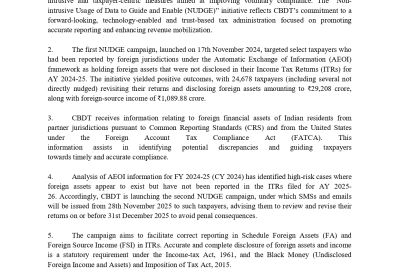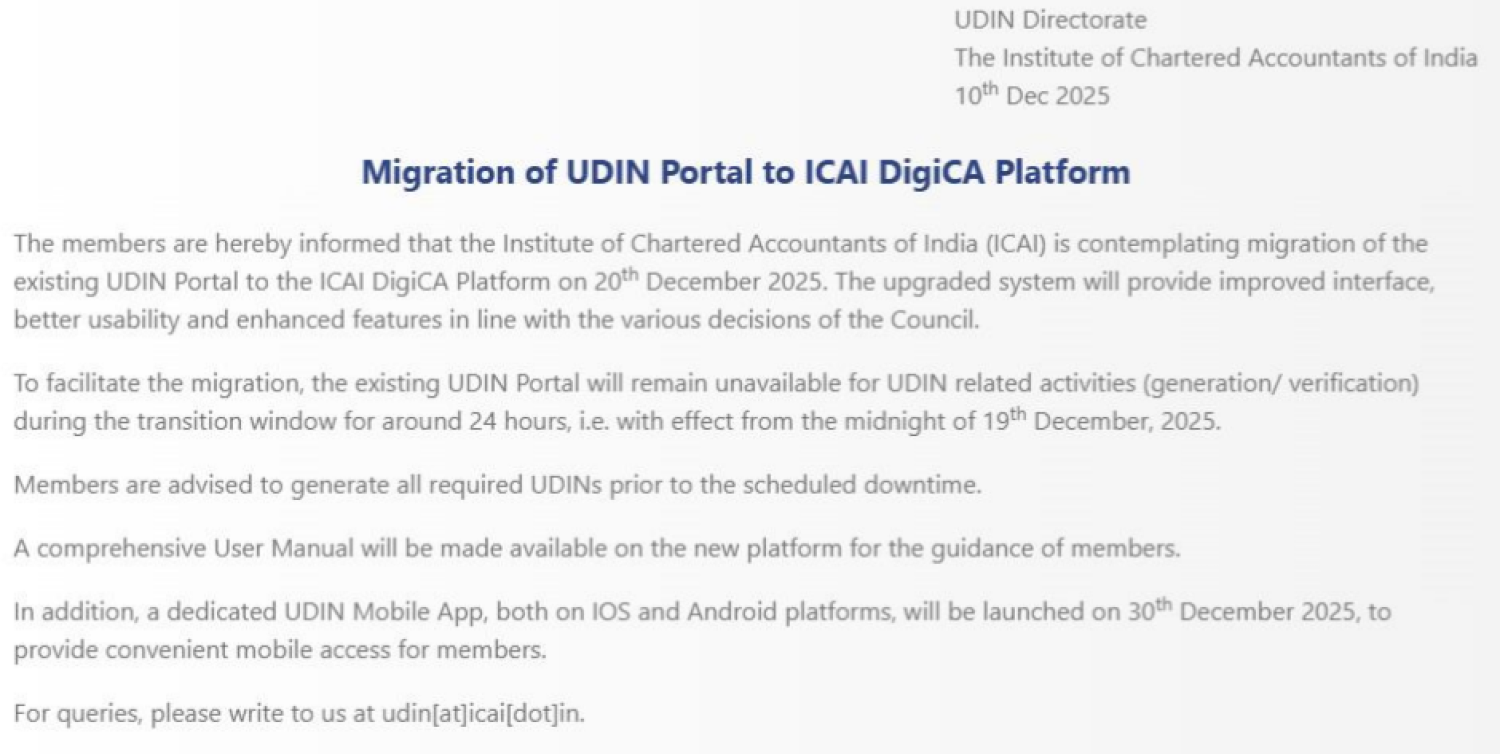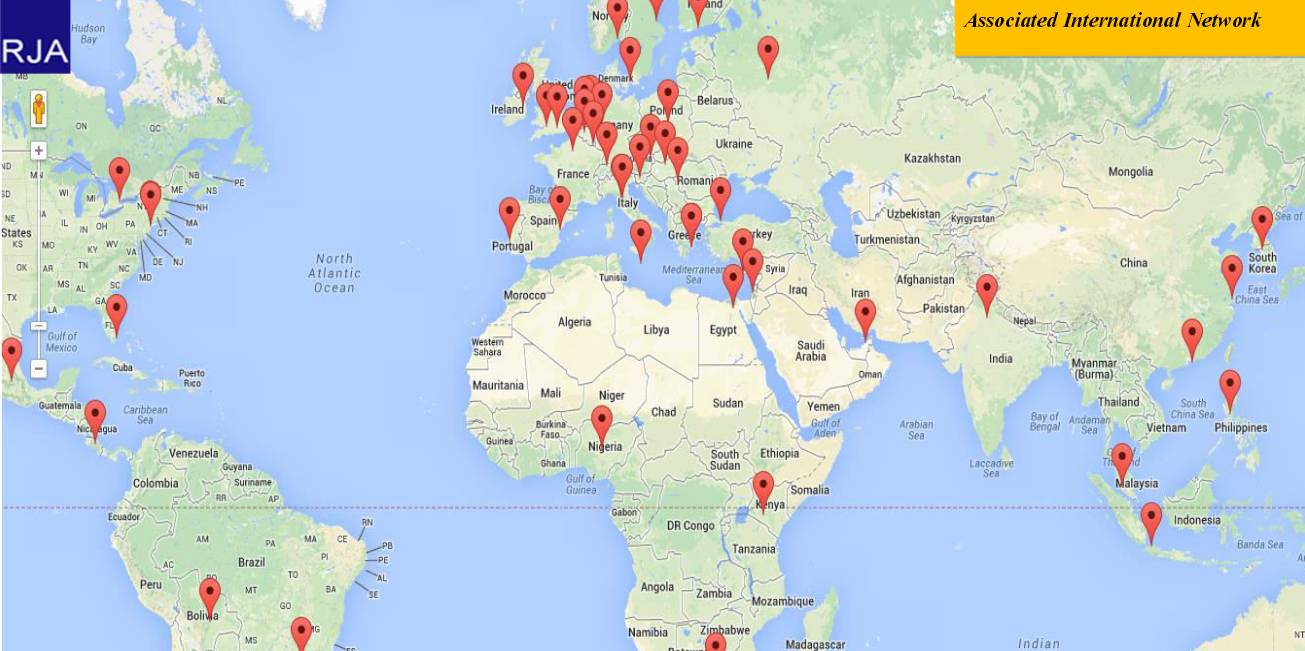Table of Contents

E-Assessment Process:
The E-filing portal is built as a forum for the conduct of various tax procedures online and electronically. E-Assessment under Income Tax Appeal is a mechanism in which tax officers interact via e-mail and to the taxpayer's account on the e-filing site. On further receipt of the mail from the tax department, the taxpayer is required to send a reply, along with the necessary paperwork and attachments, by uploading them to the e-filing portal. The taxpayer's response is viewed on the site by the tax office so any further contact and data is made through the online system and by e-mail.
Regional E-Assessment Units shall include various functional units, such as:
- Appraisal Units-The role of this Unit includes the search for any details or cases and problems where the assessment is needed.
- Verification Units-Their role will include verification of the books of accounts, data, records and information provided by the taxpayer.
- Technical Units-Its role includes assistance and advice on accounting, legal, investigative, informational, administrative, technological and other technical matters.
- Review Units – Its primary role is to review the prepared evaluation at the conclusion of the entire E-Assessment system.
As of every year 2019, the E-Assessment Scheme has been started in a staggered manner, which implies that the procedure will be carried out in phases.
Step by step Procedure for Faceless Assessment
CBDT issued by Notification on 13 August 2020, "Faceless Evaluation E-Assessment" shall be carried out in accordance with the following procedure:-
Phase I: –Issue of Notice on Assessee
- In pursuant to section 143(2), The National E-Assessment Centre shall give notice to the assessee detailing the issues for the selection of his case for assessment. And
- after notice within fifteen days from the date of receipt of the notification, the assessor can file a reply to the National E-Assessment Centre.
Phase II – Case to be allocated to the assessment unit
1. The National E-Assessment Centre, via an automated allocation scheme, shall allocate the case selected for E-Assessment to a Specific Assessment Unit in any one of the Regional E-Assessment Centres.
2. If a case is allocated to the assessment unit, an application may be made to the National E-Assessment Center for:-
-
to obtain more information, documentation, or proof from the assessor or any other person;
-
the execution of a particular investigation or verification by the verification unit
-
the proposal for technical assistance from the technical unit
3. Where even a request for more data, documents, or facts has been made by the assessee and any other person, the National E-Assessment Center shall issue an effective notice or request to the assessee or any other person to obtain the data, documents, or evidence required by the assessment unit.
4. Where a request has been made for the conduct of a particular independent inquiry or review by the verification unit, the request shall be allocated to the verification unit by the National E-Assessment Center by means of an automated allocation system.
5. Where a request for technical assistance from a technical unit has been made, the National E-Assessment Center shall delegate the request to a technical unit in any one of the Regional E-Assessment Centers by means of an automated allocation scheme.
6. After taking into account all the relevant material available on the record, the assessment unit shall submit a draught assessment order in writing, either approving the refunded income of the assessee or changing the refunded income of the assessee, and submitting a copy of that order to the National E-Assessment Center with specifics of the penalty process to be initiated therein, if any.
Phase III – Draft Income tax order of Assessment
1. The National E-Assessment Center shall review the draught assessment order in compliance with the risk management strategy defined by the Board, including by means of an automated assessment method, whereupon it will determine to:
-
Finalize the assessment as provided for in the draught assessment order and include a copy of that order and notice of initiation of the penalty process, if any to the assessee, along with the request notice, determining the amount due or reimbursement of any amount due to the assessee on the grounds of that assessment, or
-
Need an opportunity for the assessee, in the event that an adjustment is proposed, to provide a notice calling on the assessee to show cause as to why the assessment should not be completed as per the draught assessment order, or
-
Allocate the draught assessment order to a review unit in any one of the Regional E-Assessment Centers, by means of an automated allocation system to carry out a review of that order;
2. The review unit shall carry out a review of the draught evaluation order assigned to it by the National E-Assessment Centre, which may agree to:-
-
connect with the drafted assessment order and notify the National E-Assessment Center of such contract; or
-
Suggest the amendment, as it can deem necessary, to the draught assessment order and send its recommendations to the National E-Assessment Centre;
3. Upon receipt of competition from the review unit, the National E-Assessment Center shall follow the protocol laid down in point (a or (b) of paragraph (1), as the case may be.
4. The National E-Assessment Center needs to communicate the same to the E-Assessment Unit upon receipt of recommendations for amendments from the review unit.
5. The Evaluation Unit shall, after considering the modifications proposed by the Review Unit, submit the final draught Evaluation Order to the National Evaluation Centre.
6. Upon receipt of the final draught evaluation order, the National E-Assessment Center shall obey the process laid down in point (a or (b) of paragraph (1), as the case may be.
7. The assessee can provide its responses to the National E-Assessment Center, on or before the date and time stated in the notice, in cases where the show cause notice has been notified to the assessee.
8. The National E-Assessment Center,-
-
in the event that no response to the show-cause notification is issued, finalize the assessment as per the draught assessment order;
-
in any other circumstance, send the reply received from the assessee to the evaluation unit;
9. After taking into account the response issued by the assessee, the assessment unit shall make a revised draught assessment order and submit it to the National Evaluation Centre.
Phase IV – Final order and conclusion of the assessment
1. Upon receipt of the revised draught assessment order, the National E-Assessment Centre:-
•In the event that no alteration that is prejudicial to the interest of the assessee is suggested with regard to the draught evaluation order, finalize the assessment or
-
In the event that no amendment that is prejudicial to the interest of the assessee is suggested with regard to the draught assessment order, finalize the assessment or
-
In the event of a revision that is prejudicial to the interest of the assessee, with regard to the draught assessment order, provide an opportunity for the assessee.
-
The response issued by the assessee shall be dealt with in accordance with the process laid down in points 7, 8, 9 of Phase 3;
2. Upon the conclusion of the assessment, the National E-Assessment Center shall send all the digital records of the case to the Assessing Officer exercising jurisdiction over the following:
-
the imposition of fines
-
correction of the error;
-
the compilation and recovery of demand;
-
to give effect to the appeal of orders
-
the filing of a remand report, or any other report to be submitted, or any representation to be made, or any document to be drawn up even before Commissioner (Appeals), the Appellate Tribunal or the Courts, as the case may be;
-
a request seeking approval for the initiation of proceedings and the filing of a lawsuit before the Court;
3. At any stage of the assessment, the National E-Assessment Center can if deemed appropriate, pass the case to the Assessing Officer shall have jurisdiction in that case.
The Faceless assessment system was applied to the country as a whole on 13 August 2020, terminating territorial authority and individual discretion, where the officer was the whole and the sole assessee. Scrutiny would be assigned on a random selection. A taxpayer's assessment in Delhi may well be carried out by an officer sitting in Pune. It would bring an end to wasteful litigation. The best tests under Section 144 will now also be covered by the Faceless Assessment.
Basic reasons for the implementation of the E-Assessment System in India:
There is a range of advantages to the E-Assessment Scheme, especially in a populous and diverse country like India, where there are so many taxpayers. These incentives are the primary justification for the implementation of the E-Assessment under the Income Tax Appeal. The benefits of the scheme shall include:
-
In the event of any change, the taxpayer would not go to the department over and over again and instead make all the appropriate adjustments online.
-
There is a digital exchange of information between the taxpayer and the income tax agency.
-
For the purposes of the tax assessment, the taxpayer is not expected to be present physically at the agency.
-
As the mode of communication is entirely online and faceless, the taxpayer and the officer will therefore have every opportunity for personal contact. This would lead to a reduction in cases of corruption.
Key highlights of PM Modi’s speech on Transparent Taxation: Seamless, painless, Faceless Assessment
CBDT: Income Tax Department hopes to finalize all faceless e-Assessments by mid-September.
Time limit for issuing different income-tax notices and completion of the assessment

















